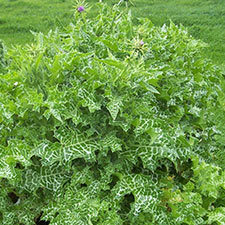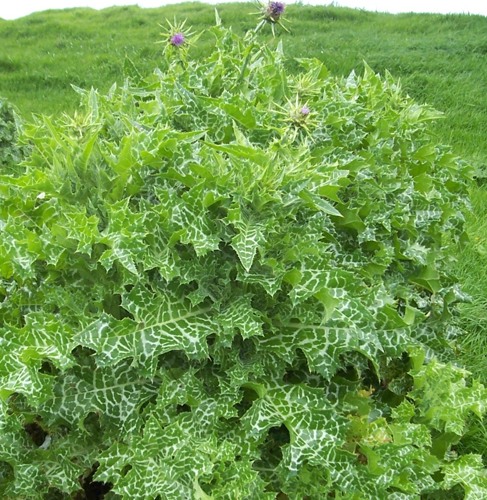 Variegated thistle
Variegated thistle
Common name: Variegated thistle; Milk thistle
Botanical name: Silybum marianum
Management programme: Progressive Containment
Originally from the Mediterranean and Western Europe and naturalised in New Zealand in 1969.
Why is it a pest?
- Very competitive, shades other plants.
- Invades large areas of pasture, is unpalatable to stock and reduces pasture productivity.
- Toxic to cattle, contaminates wool and can harbour pests such as rabbits.
Where is it found?
- Alluvial flats, stockyards, sheep camps, other areas of high nitrogen soil levels.
- Invades pasture areas with summer drought and moist mild winters.
- Seed dispersed mostly by wind, also by water, mud, hay, on machinery and animals.
- Not common in the Bay of Plenty.
What does it look like?
- Erect biennial thistle growing up to 2.5m high and 2m wide.
- Prominent white veins and blotches on spiny leaves which grow up to 60cm.
- Large purple flowers (November to January) are surrounded by spines and produce 50-200 black or brown seeds.
- Seeds are 6-8mm long with downy hairs at one end.
- Plants die down later in summer.
What are the rules?
Progressive Containment
Progressive Containment species are pests which the Council aims to prevent from spreading, reduce the distribution, or eradicate within parts of the region over time. Landowners or occupiers are responsible for the control of Progressive Containment species on their property. Council may enforce the control of these pest species.
How do you get rid of it?
- Grub out small infestations before flowering.
- Spot spray.
- Larger infestations of seedlings can be boom sprayed during early winter or spring. Graze pasture first to remove clover, leave for one week then apply spray. Do not graze for at least 2 weeks after spraying.
CAUTION: When using any herbicide or pesticide, PLEASE READ THE LABEL THOROUGHLY to ensure that all instructions and directions for the purchase, use and storage of the product, are followed and adhered to.
Read more on pest control advice, information and regulations

